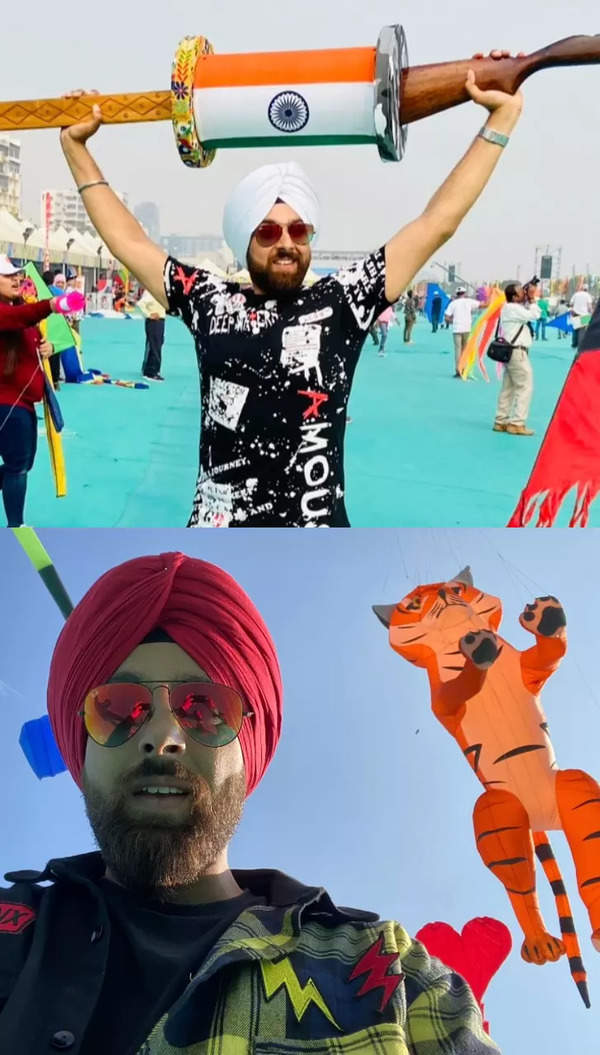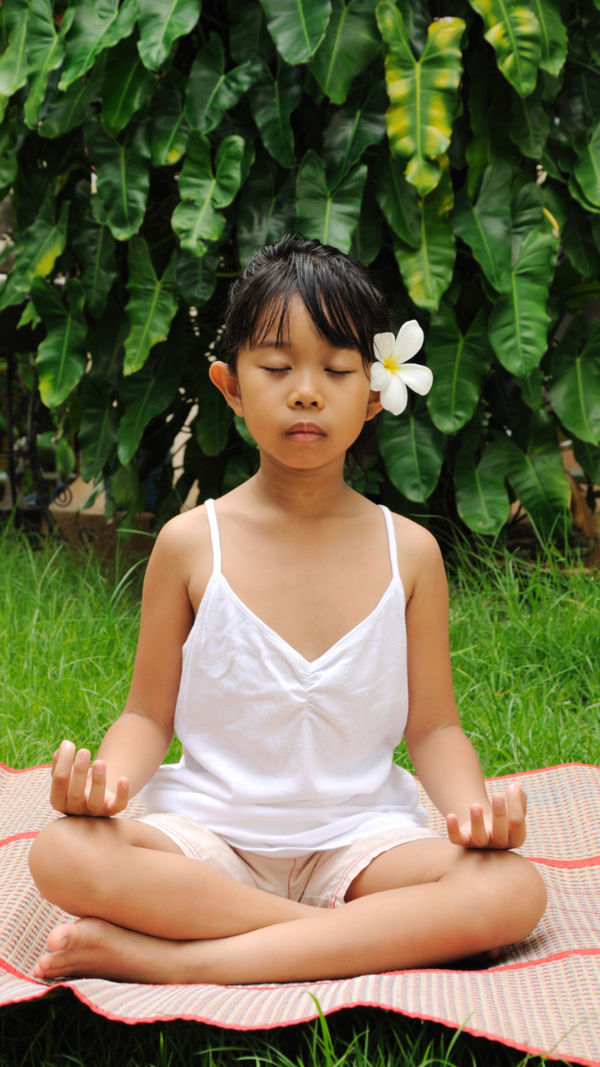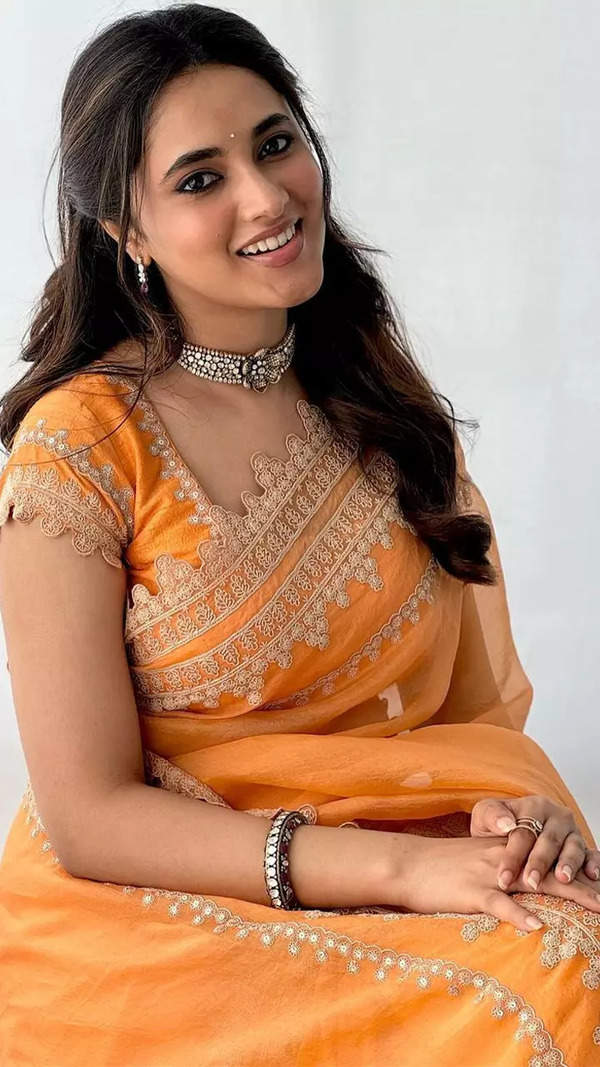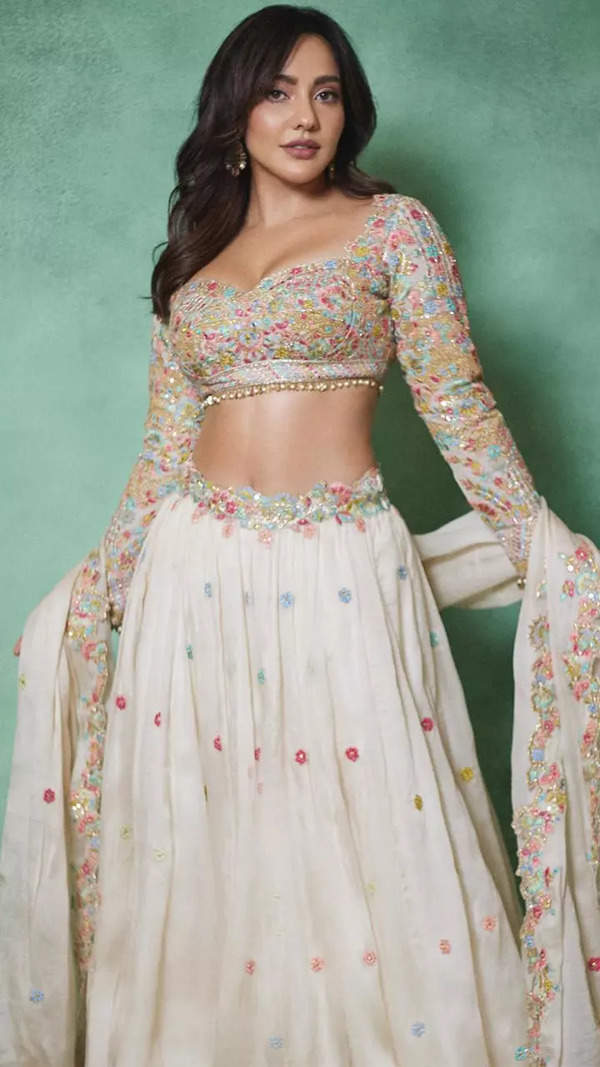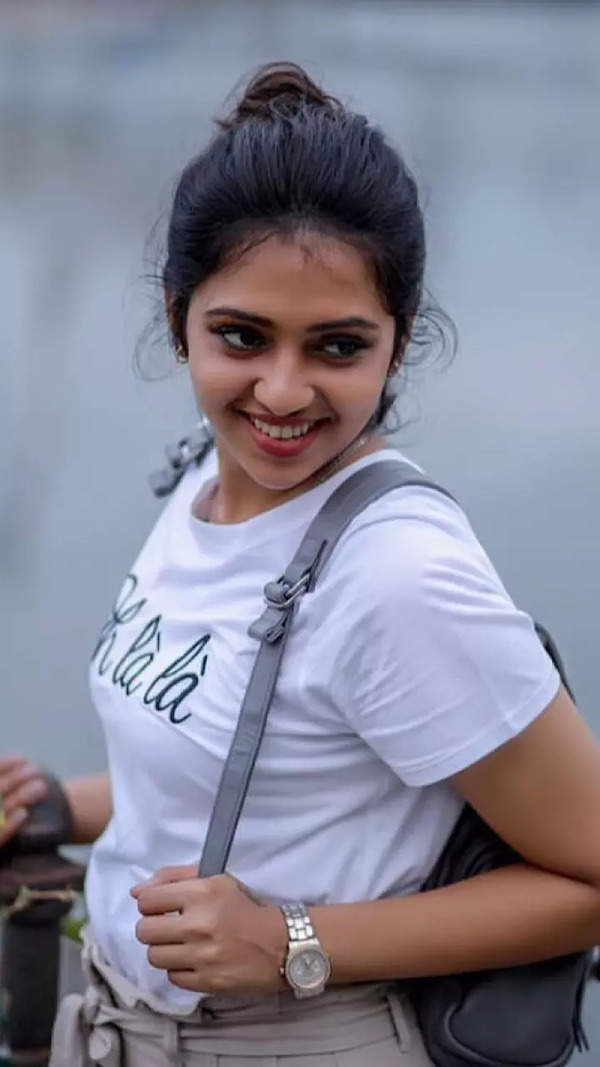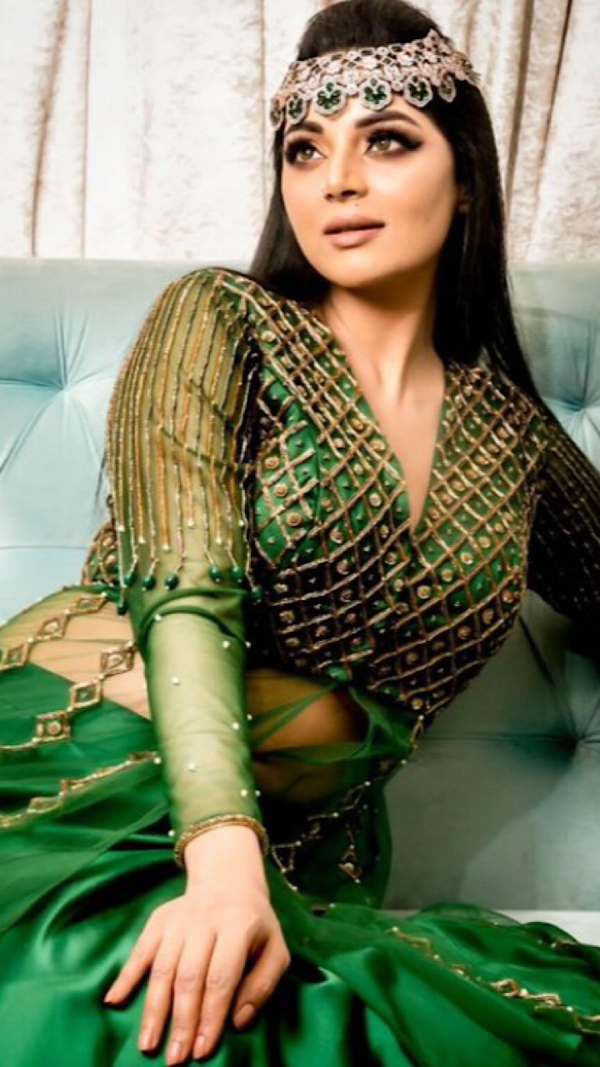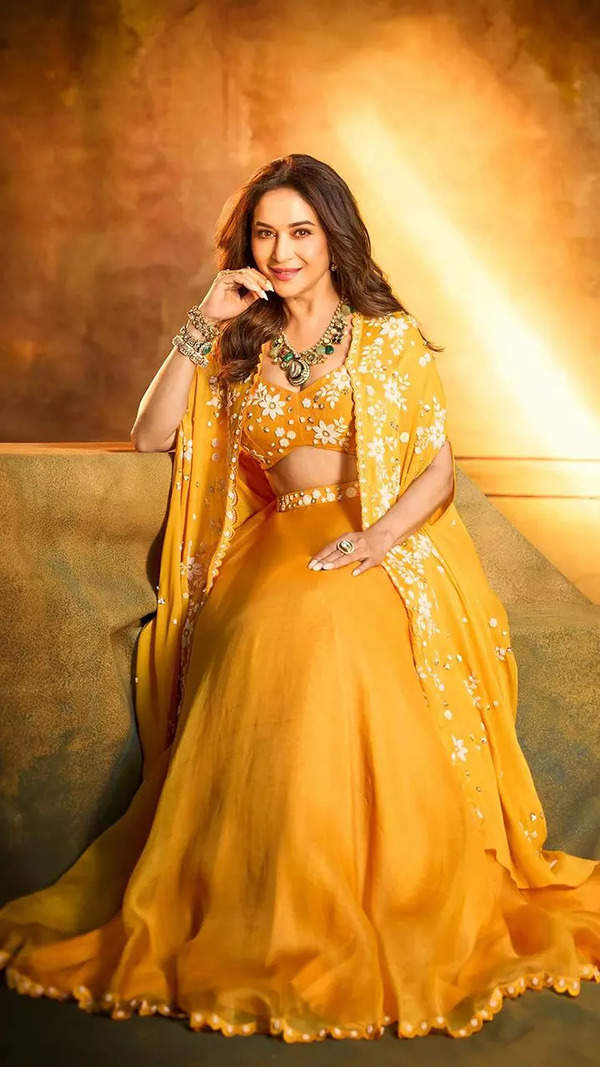Trending
This story is from January 16, 2016
How Kanjeevaram won the bride war over Benarasi
A bride's trousseau is a project in itself. And of all the 1,001 outfits, the wedding sari is what attracts the maximum amount of scrutiny and ahttp:wwws. Right?
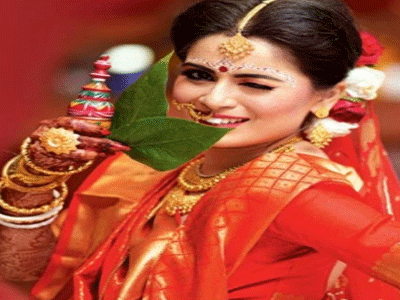
Key Highlights
• Kanjeevaram and not Benarasi, is the bride's latest best friend, especially in the north.
• The wedding sari is what attracts the maximum amount of scrutiny.
• The wedding sari is what attracts the maximum amount of scrutiny.
A bride's trousseau is a project in itself. And of all the 1,001 outfits, the wedding sari is what attracts the maximum amount of scrutiny and ahttp:wwws. Right?
However, the Kanjeevaram and not Benarasi, is the bride's latest best friend, especially in the north. Elegant and absolutely gorgeous, the south silk is giving tough competition to the must have of a bride's trousseau, the Benarasi.
Value for money
The first thought when making an investment is the ROI, or the return on investment.A Kanjeevaram fares way better than a Benarasi in this as it's not a 'one-time wear' like the latter, which is usually stashed away in the almirah after the wedding. Says veteran makeup artist Aniruddha Chakladar, "Today's generation is bored with Benarasis, so brides are opting for Kanjeevarams. Also, the heavy Benarasi is usually kept under lock and key, after being worn once. Kanjeevaram isn't very heavy and can be worn to parties."
Of course, sari sellers are doing their best to cash in on the trend. Ishwar Bhojraj Thakwani owner of a sari shop says, "Wearing Benarasi during marriage is an age-old tradition. But these days, brides want to experiment with their looks, so they are zeroing in on Kanjeevaram."
An expensive Kanjeevaram can be worn on many other occasions, so it's an intelligent buy ," adds Bhojraj. His views are reiterated by Bhaskaran, owner of a well-known south silk saris shop, who is amazed by the new found affinity to south Indian fabrics. “Bright-coloured saris were always a hit among would-be brides. I feel brides are going for Kanjeevarams to look different. I had no idea, North-Indian brides have a fetish for south silks too," he says.
Non-fussy elegance
Even though south silks are heavy , the lighter brocade work makes them easier to manage.Wedding photographer Bipradip Chakraborty prefers this sari. "A bride's comfort matters to photographers as a heavy outfit can restrict her movements. I feel a Kanjeevaram allows the bride to experiment with her poses, which translates into beautiful photographs," he says.
Stylists also agree that this particular silk texture lends a better base for traditional gold jewellery. "Not just Kanjeevarams, other silks like Tanchoi, Paithani and even weaved raw silk saris are on the upswing. For brides who want an understated, yet striking elegance, Kanjeevaram delivers," says stylist Sandy . Makeup artist Prasenjit Biswas, however, sees an entirely new trend in this. “It's a part of globalisation. South silks have always been a favourite, but including them in the bridal trousseau is a big leap," says Prasenjit.
A wider colour palette
In Benarasi, the colour pool is not too wide -there are mostly variations of red, blue and pink. Narendra Kishore Majumdar who deals in saris, says, "Kanjeevarams comes in many colours.The saris are also priced similar."
Rumi Talukdar, who got married early last year, opted for a Kanjeevaram. "Of the many factors that influenced my decision, the primary one was the colour. I've noticed that Benarasis absorb light. On your wedding day , with so much light around you, the photographs turn out brilliantly . But, if you want to wear it again, it will just look dull and won't even look its price.However, a Kanjeevaram's texture reflects light, which provides an ombre effect. It looks brilliant, irrespective of the amount of light around you," says Rumi.
Know your nine yards Kanjeevaram
Kanjeevaram (or Kanchipuram) saris are indigenous to Kanchipuram, a temple town in Tamil Nadu with more than 400 years of weaving tradition. It is favoured for the durability. Kanjee silk is thicker than almost all other silks and is, therefore, more expensive. The heavier the silk, the better the quality. Peacocks, parrots, temple motifs and buttas are traditional patterns. Only mulberry silk produced in Karnataka and few parts of Tamil Nadu is right for the classic Kanjee. Since the pallu is weaved from a single thread, its durability increases. Also, in a traditional Kanjeevaram, the pallu and the sari are woven separately and then interlocked. Benarasi Indigenous to the holy town of Benaras in UP, Benarasis are one of the heaviest and most gorgeous saris. Woven out of the finest silk, it owes its origin to the Mughal era, and still boasts of intricate Mughal patterns like kalis and vines, made of golden thread. This sari is characterised by small intricate designs which are repeated all over the body of the sari. The jaal design of the pallu, which makes use of heavy zari work, is another typical feature of this sari.
(By Ruman Ganguly & Sutapa Singha)
However, the Kanjeevaram and not Benarasi, is the bride's latest best friend, especially in the north. Elegant and absolutely gorgeous, the south silk is giving tough competition to the must have of a bride's trousseau, the Benarasi.
Value for money
The first thought when making an investment is the ROI, or the return on investment.A Kanjeevaram fares way better than a Benarasi in this as it's not a 'one-time wear' like the latter, which is usually stashed away in the almirah after the wedding. Says veteran makeup artist Aniruddha Chakladar, "Today's generation is bored with Benarasis, so brides are opting for Kanjeevarams. Also, the heavy Benarasi is usually kept under lock and key, after being worn once. Kanjeevaram isn't very heavy and can be worn to parties."
Of course, adding that extra something to the wedding which makes the bride stand out in a crowd is also one of the many reasons behind this south weave's popularity . Sonali Das, who got married in December and opted for a Kanjeevaram, says, "Everyone wears a Benarasi for their wedding. I'm not fascinated with it and, besides, it's a real hassle wearing it. I've seen my friends and my sister struggling during their special day because it's hard to move around in one."
Of course, sari sellers are doing their best to cash in on the trend. Ishwar Bhojraj Thakwani owner of a sari shop says, "Wearing Benarasi during marriage is an age-old tradition. But these days, brides want to experiment with their looks, so they are zeroing in on Kanjeevaram."
An expensive Kanjeevaram can be worn on many other occasions, so it's an intelligent buy ," adds Bhojraj. His views are reiterated by Bhaskaran, owner of a well-known south silk saris shop, who is amazed by the new found affinity to south Indian fabrics. “Bright-coloured saris were always a hit among would-be brides. I feel brides are going for Kanjeevarams to look different. I had no idea, North-Indian brides have a fetish for south silks too," he says.
Non-fussy elegance
Even though south silks are heavy , the lighter brocade work makes them easier to manage.Wedding photographer Bipradip Chakraborty prefers this sari. "A bride's comfort matters to photographers as a heavy outfit can restrict her movements. I feel a Kanjeevaram allows the bride to experiment with her poses, which translates into beautiful photographs," he says.
Stylists also agree that this particular silk texture lends a better base for traditional gold jewellery. "Not just Kanjeevarams, other silks like Tanchoi, Paithani and even weaved raw silk saris are on the upswing. For brides who want an understated, yet striking elegance, Kanjeevaram delivers," says stylist Sandy . Makeup artist Prasenjit Biswas, however, sees an entirely new trend in this. “It's a part of globalisation. South silks have always been a favourite, but including them in the bridal trousseau is a big leap," says Prasenjit.
A wider colour palette
In Benarasi, the colour pool is not too wide -there are mostly variations of red, blue and pink. Narendra Kishore Majumdar who deals in saris, says, "Kanjeevarams comes in many colours.The saris are also priced similar."
Rumi Talukdar, who got married early last year, opted for a Kanjeevaram. "Of the many factors that influenced my decision, the primary one was the colour. I've noticed that Benarasis absorb light. On your wedding day , with so much light around you, the photographs turn out brilliantly . But, if you want to wear it again, it will just look dull and won't even look its price.However, a Kanjeevaram's texture reflects light, which provides an ombre effect. It looks brilliant, irrespective of the amount of light around you," says Rumi.
Know your nine yards Kanjeevaram
Kanjeevaram (or Kanchipuram) saris are indigenous to Kanchipuram, a temple town in Tamil Nadu with more than 400 years of weaving tradition. It is favoured for the durability. Kanjee silk is thicker than almost all other silks and is, therefore, more expensive. The heavier the silk, the better the quality. Peacocks, parrots, temple motifs and buttas are traditional patterns. Only mulberry silk produced in Karnataka and few parts of Tamil Nadu is right for the classic Kanjee. Since the pallu is weaved from a single thread, its durability increases. Also, in a traditional Kanjeevaram, the pallu and the sari are woven separately and then interlocked. Benarasi Indigenous to the holy town of Benaras in UP, Benarasis are one of the heaviest and most gorgeous saris. Woven out of the finest silk, it owes its origin to the Mughal era, and still boasts of intricate Mughal patterns like kalis and vines, made of golden thread. This sari is characterised by small intricate designs which are repeated all over the body of the sari. The jaal design of the pallu, which makes use of heavy zari work, is another typical feature of this sari.
(By Ruman Ganguly & Sutapa Singha)
End of Article
FOLLOW US ON SOCIAL MEDIA
